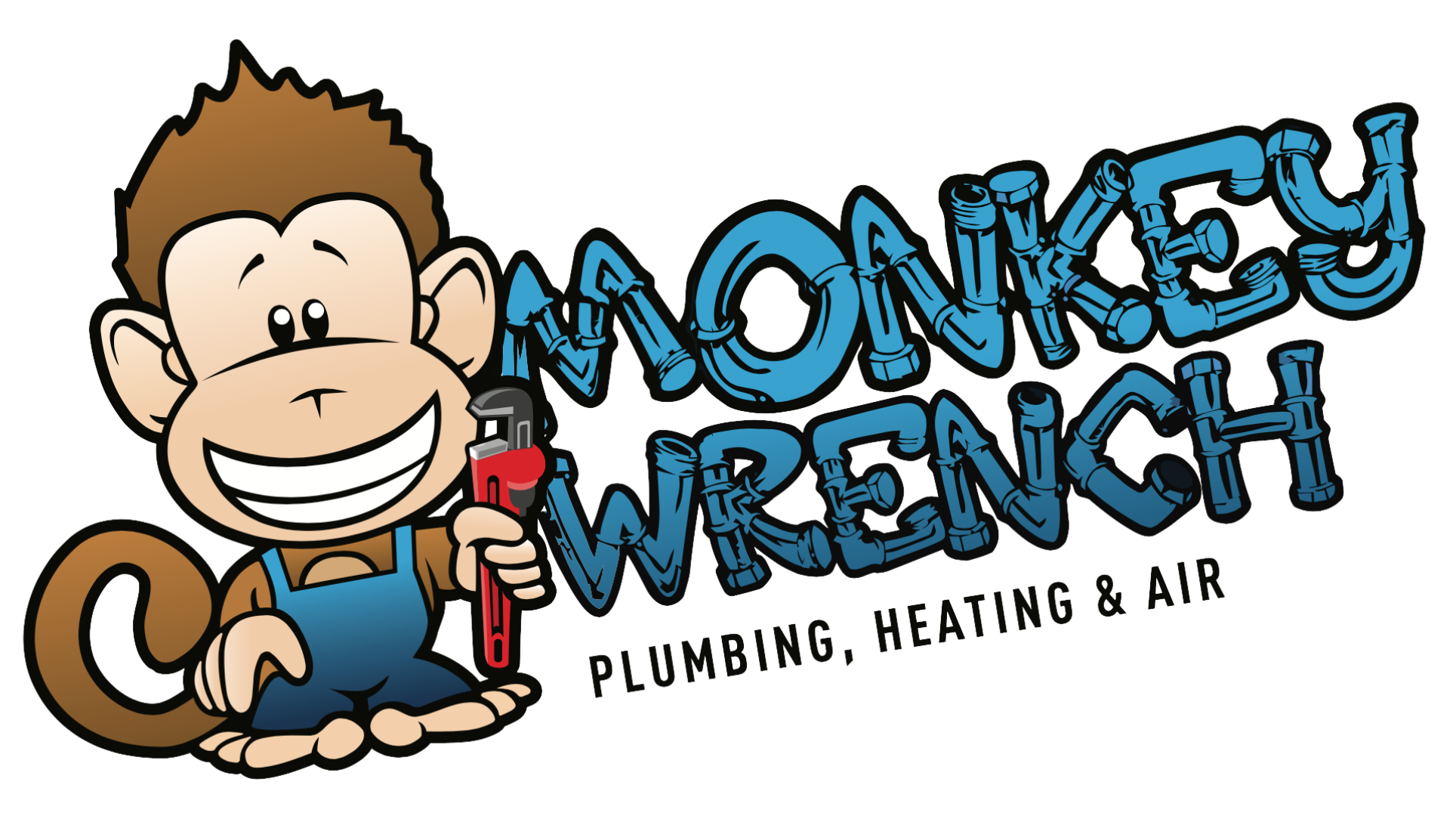Does a Water Softener Need Maintenance?
So, you’ve decided to reap the benefits of soft water by installing a water softener, but do you just set it and forget it? The answer is not really. But once you install it, do you need to maintain it?
At Monkey Wrench Plumbing, Heating & Air, we've been installing water softeners and helping homeowners with maintenance for over 15 years. We've seen how efficient water softeners can be with the right care and upkeep. Unfortunately, we have also seen the adverse effects of zero maintenance on water softeners, and we want to help people avoid these issues.
In this article, we will go over the following maintenance tips.
- Brine Tank Inspection
- Adding Salt as Needed
- System Regeneration
- Bonus Maintenance Tips
Want to ensure your home has soft water for years to come? Read on further to learn maintenance tips that can extend the life of your water softener.
1. Inspect Your Brine Tank
A water softener is made up of three main components. The resin tanks contain special beads that replace the minerals responsible for hard water with salt from the brine tank. The brine tank is the unit that holds the salt, and the final component is the control unit, which allows you to operate the water softener.
The brine tank is located next to the resin tank, and it holds water and salt pellets.
- After you locate the brine tank, open the lid.
- Inspect the brine tank for salt and water levels.
- Water levels should be three to six feet from the bottom.
The salt and water levels will help you determine how much of it to add to your brine tank. But what happens if you don't check your brine tank?
The Importance of Brine Tank Inspection
It is recommended you inspect your brine tank at least once a month. Brine tank inspections help you stay on top of any issues that can occur, like saltwater leaks or clogs.
Leaks and clogs can affect the performance of your water softener. These systems rely on brine to replenish the sodium minerals in the resin tank to soften water. Without the appropriate amount of salt, the water softener will not be able to soften the hard water entering your home and let you enjoy soft water's benefits.
Salt is vital for water softeners, so how many pellets of salt should be in the brine tank? We'll go over that in the next section.
2. Add Salt and Water as Needed
You must add salt pellets to your water softener if the salt levels are low. Water softener systems come in different sizes depending on the size of the home, but on average, they should be half-filled with salt.
The water softeners installed by Monkey Wrench Plumbing, Heating & Air require five to six bags of salt rocks. There are various brands of salt replenishing for water softeners. For example, a Monkey Wrench-installed water softener is compatible with Morton Clean and Protect Water Softener Pellets, as seen in the video.
Ensure the water levels are the appropriate amount before adding the salt. The salt pellets should always be a few inches above the water level. This helps ensure the water absorbs salt to create brine water for the resin tank.
The most common salt used for cooking is table salt but is the same type used for water softeners? In the next section, we'll briefly highlight salts suitable for water softeners.
Which Salt is Suitable for Water Softeners?
There are three choices to choose from when it comes to salt for water softeners.
- Rock Salt: Also known as coarse salt, this option is usually the lowest price of all the compatible salts and is mined from underground salt mines. It also contains the most impurities from the other options. It can lead to increased cleanings and decreased efficiency due to the number of impurities present.
- Solar Salt: This salt is created when sunlight evaporates seawater, hence the name solar salt. It is a more eco-friendly option than rock salt and is purer too.
- Evaporated Salt: Evaporated salt is the purest salt you can use for water softener replenishment. It is created using an evaporation process with water and steam. Although it's the purest option available, it is also the most expensive.
Any one of these three options is suitable for water softeners. It may depend on your budget, but either one should be able to extend your water-softening system's ability to combat hard water.
Salt refills are key for water softeners, but if you want to combat scale buildup without using salt refills every couple of weeks, water conditioners are also available.
So you added salt and water to your brine tank; what happens next? The following section will focus on this last maintenance step.
3. Regenerate Your Water Softener System
Once you refill the brine tank with salt pellets and water, you will need to set the system to regenerate manually. Water softener regeneration is when the system that flushes out the water in the resin tank has accumulated the minerals responsible for hard water: calcium and magnesium. The system pulls sodium-concentrated water from the brine tank and replenishes the resin tank to continue softening the hard water.
The control unit located at the top of the resin tank is the system that monitors resin tank water levels and initiates the regeneration process. The button layout for each water softener control unit is different. Check your water softener's manufacturer manual for instructions on how to regenerate the system manually.
Once the system successfully regenerates, your water softener will continue to operate efficiently and combat the effects of hard water.
With these three steps, you should be able to maintain your water softener with ease. With our accumulated knowledge of water softeners, we found other maintenance tips to ensure your water softener works well for years.
Bonus Water Softener Maintenance Tips
You can keep your water softener working correctly with three easy steps. Still, you can go above and beyond to ensure that your softener will maintain its effectiveness with these bonus maintenance tips.
- Look for and remove any salt bridges: Salt bridges are formed when salt residue builds up. The residue makes it harder for the water to absorb the salt. You can use the end of a broomstick to break apart any salt bridges easily.
- Replace water softener resin: The tank's resin beads can last 10 to 15 years before replacement. We recommend contacting a technician for assistance in replacing your water softener's resin beads.
- Clean out the brine tank: Clean out the brine tank thoroughly every couple of years. Before cleaning and removing any remaining salt water, make sure the system is powered off. Once it’s powered off, you can remove any built-up sludge from the brine tank.
- Keep the entire system clean: The outside of the water softener can gather dust. Dust won't affect the water softener's performance, but a clean softener system looks aesthetically better around a home.
- Check for loose valves: The system has valves that sometimes loosen up. Make sure they're tight so that you do not deal with water softener leaks.
All this maintenance talk may seem overwhelming, but it is pretty simple and doesn't take up too much time to complete.
Is My Home Ready for a Water Softener?
Knowing how to maintain appliances and fixtures throughout your home is key to ensuring they function properly. Water softeners are no different, and knowing the maintenance they require will help you make the most of your softener so you can enjoy benefits like healthier hair, skin, and nails.
Monkey Wrench Plumbing, Heating & Air is seasoned in water softener maintenance thanks to the thousands of homeowners we've helped throughout Los Angeles and the surrounding areas. We hope our knowledge can help you easily maintain your water softener so your home can run smoothly.
If you need a hand with water softener maintenance but don’t know where to start, contact us with one of the buttons below or through our water softener scheduler for more information.
We understand that water softeners may not fit every home, but that doesn’t mean there aren’t other options available. Explore water softener alternatives by checking our article on the key differences between softeners and water conditioners.




